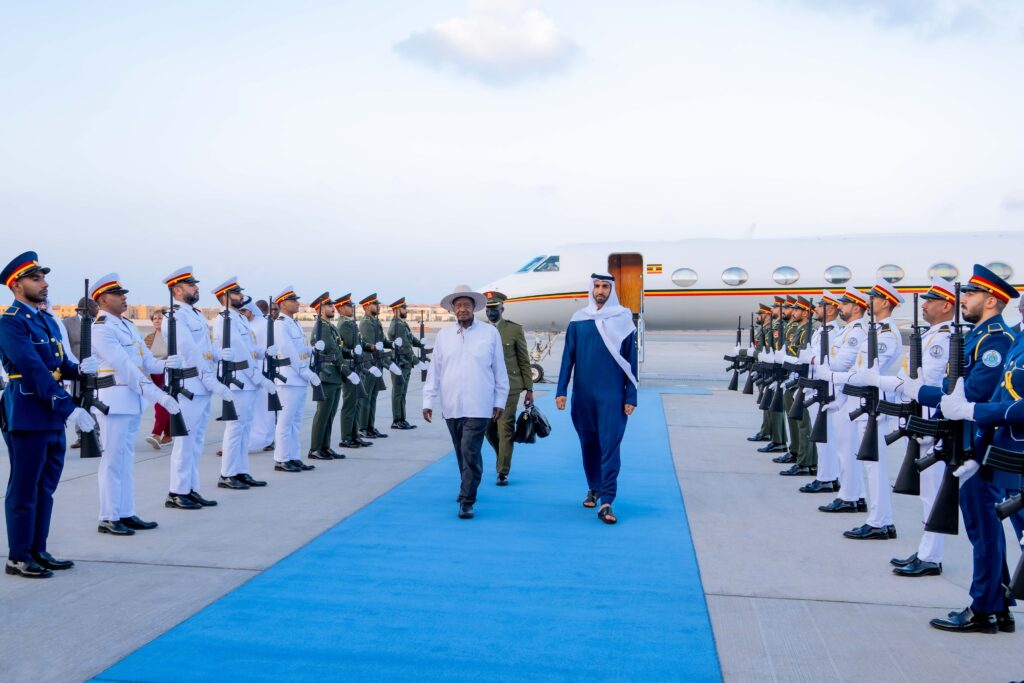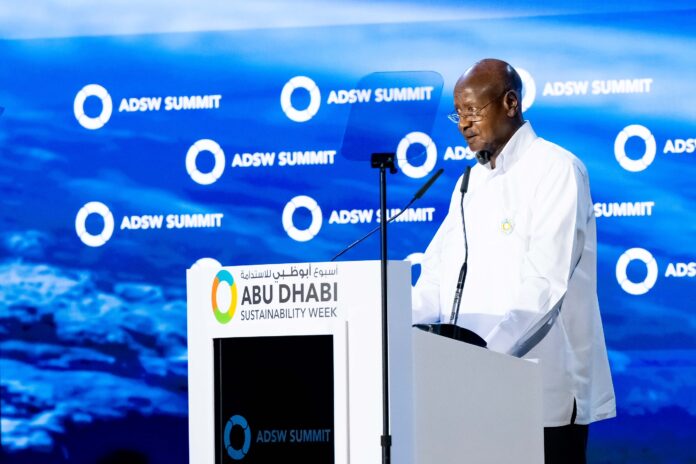President Yoweri Museveni delivered an insightful presentation on Uganda’s economic trajectory during a summit in Abu Dhabi, highlighting growth driven by peace, infrastructure, and human capital development. His remarks were aimed at attracting global investors to Uganda.
Museveni revisited Uganda’s economic status in 1986, when its exports were limited to coffee, cotton, tea, tobacco, and tourism—a structure he referred to as the “3Cs and 3Ts.” He outlined the comprehensive economic transformation that followed.

The President’s five-phase roadmap included:
- Reviving Traditional Exports: Enhancing coffee, cotton, tea, and tobacco production while expanding tourism.
- Sectoral Diversification: Adding industries like fisheries, dairy, fruit processing, and beef production.
- Value Addition: Investing in local processing of raw materials, particularly textiles and sugar.
- The Knowledge Economy: Developing high-tech industries, including the production of electric vehicles and vaccines.

Museveni noted that Uganda’s GDP grew from $4 billion in 1986 to $55 billion in foreign exchange and $168.5 billion in PPP. He credited this growth to strategic investments in peace and infrastructure.
“We invested in electricity, roads, schools, and health centers to lay a foundation for sustainable growth,” he emphasized.
The President’s remarks underscored Uganda’s emergence as a key regional trade hub, citing infrastructure projects that boost trade within East Africa. He invited international investors to join Uganda’s journey toward greater economic prosperity.
Museveni’s forward-looking vision focused on innovation, sustainability, and partnerships as essential components for future growth.
























